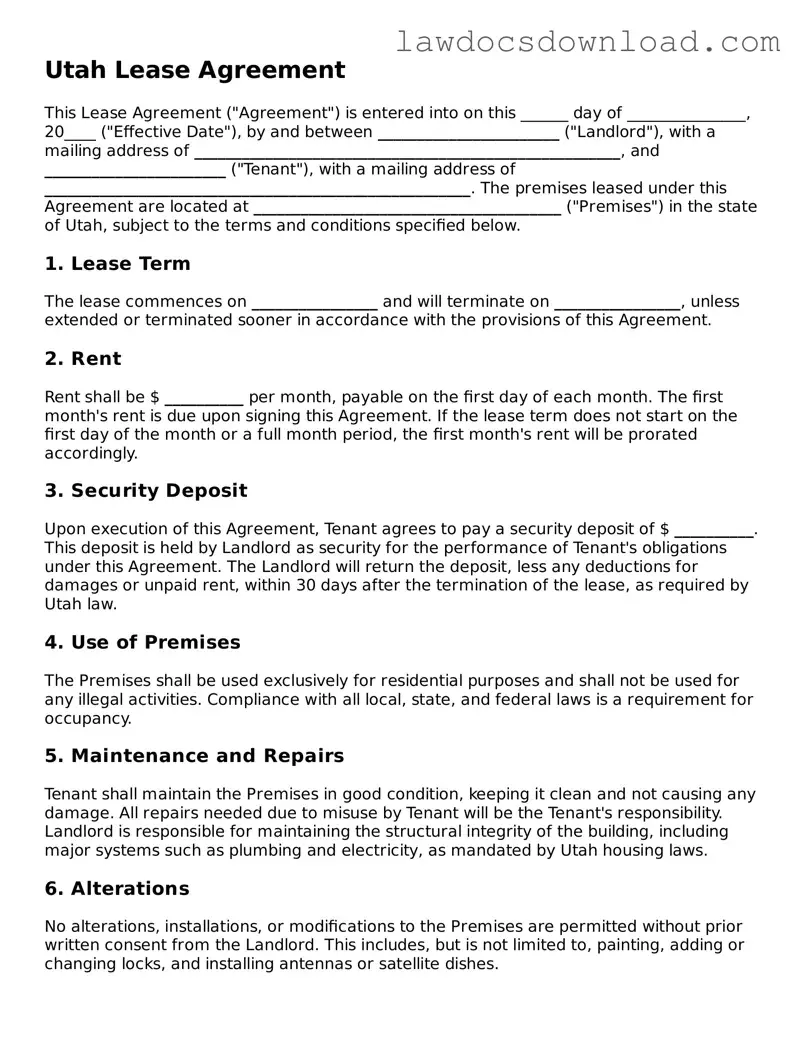Utah Lease Agreement
This Lease Agreement ("Agreement") is entered into on this ______ day of _______________, 20____ ("Effective Date"), by and between _______________________ ("Landlord"), with a mailing address of ______________________________________________________, and _______________________ ("Tenant"), with a mailing address of ______________________________________________________. The premises leased under this Agreement are located at _______________________________________ ("Premises") in the state of Utah, subject to the terms and conditions specified below.
1. Lease Term
The lease commences on ________________ and will terminate on ________________, unless extended or terminated sooner in accordance with the provisions of this Agreement.
2. Rent
Rent shall be $ __________ per month, payable on the first day of each month. The first month's rent is due upon signing this Agreement. If the lease term does not start on the first day of the month or a full month period, the first month's rent will be prorated accordingly.
3. Security Deposit
Upon execution of this Agreement, Tenant agrees to pay a security deposit of $ __________. This deposit is held by Landlord as security for the performance of Tenant's obligations under this Agreement. The Landlord will return the deposit, less any deductions for damages or unpaid rent, within 30 days after the termination of the lease, as required by Utah law.
4. Use of Premises
The Premises shall be used exclusively for residential purposes and shall not be used for any illegal activities. Compliance with all local, state, and federal laws is a requirement for occupancy.
5. Maintenance and Repairs
Tenant shall maintain the Premises in good condition, keeping it clean and not causing any damage. All repairs needed due to misuse by Tenant will be the Tenant's responsibility. Landlord is responsible for maintaining the structural integrity of the building, including major systems such as plumbing and electricity, as mandated by Utah housing laws.
6. Alterations
No alterations, installations, or modifications to the Premises are permitted without prior written consent from the Landlord. This includes, but is not limited to, painting, adding or changing locks, and installing antennas or satellite dishes.
7. Governing Law
This Agreement shall be governed by and construed in accordance with the laws of the State of Utah, without giving effect to any principles of conflicts of law.
8. Complete Agreement
This document, along with any attached exhibits and addenda, constitutes the entire agreement between Landlord and Tenant. No oral agreements have been entered into, and all modifications or amendments must be in writing and signed by both parties.
Signature
By signing below, both Landlord and Tenant agree to all terms and conditions outlined in this Utah Lease Agreement.
Landlord Signature: _____________________________ Date: _______________
Tenant Signature: _____________________________ Date: _______________
